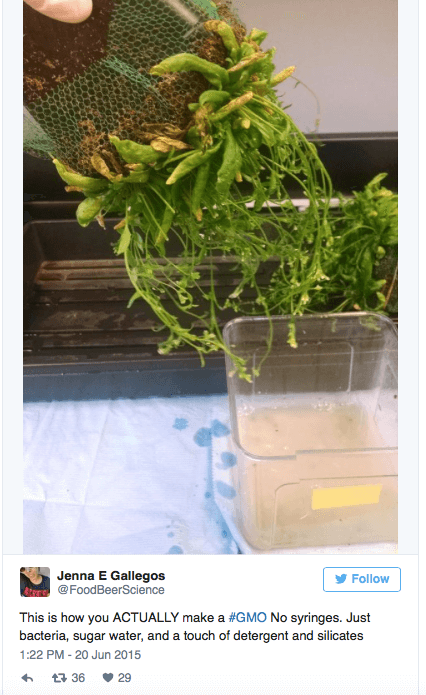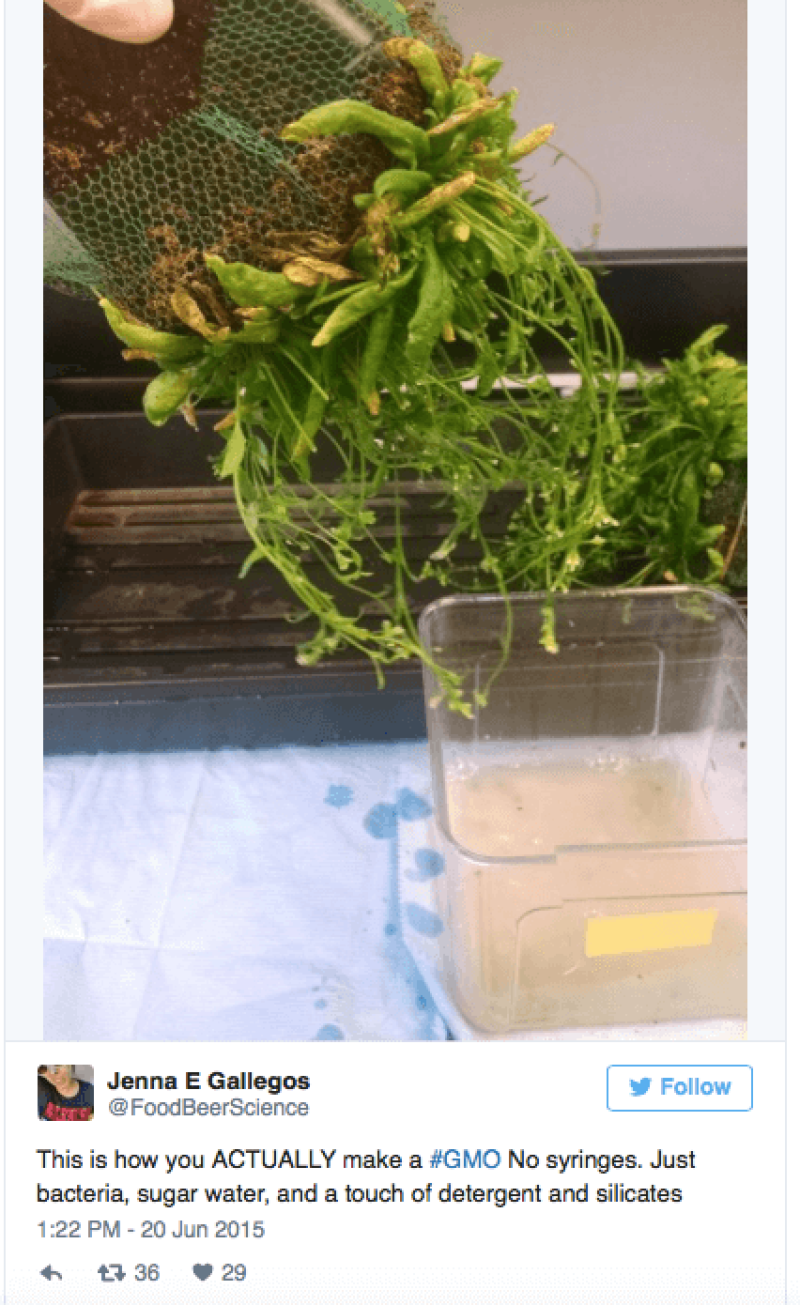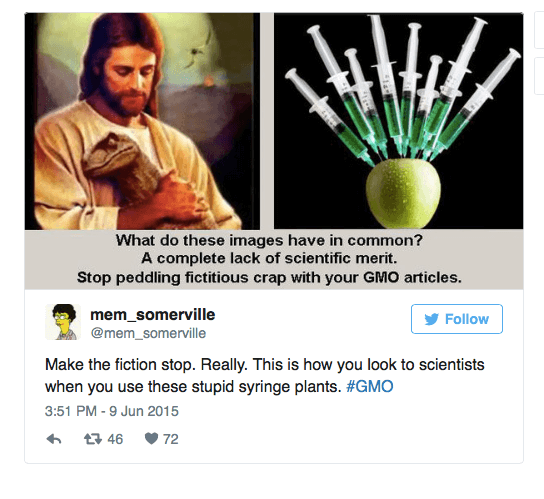The GLP aggregated and excerpted this blog/article to reflect the diversity of news, opinion and analysis.
We’ve had it. Scientists are pleading with editors, writers, photo and art directors, and anyone involved in choosing graphics for a site to stop using these baseless images with stories.
Would you use imagery from climate science deniers to illustrate your pieces? Scary vaccine misrepresentations on vaccination pieces? Chemtrails photos on pollution stories? Evolution pieces with Jesus and dinosaurs? Think this through, please.
Look–you are hurting the discourse for everyone–including farmers
The other thing it reminds us of–besides Jesus riding a dinosaur:

Crocoduck, meet fishy-beet. Equally fictional, equally loved by people with little grasp of biology.
Why use dubious and distorting fictions on plant science? Is that right? Is that how you want to look to the scientific community? Here’s what it really looks like:

Read full, original post: Syringe plants. Cut it out.
































